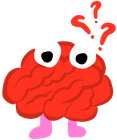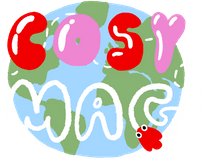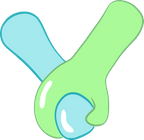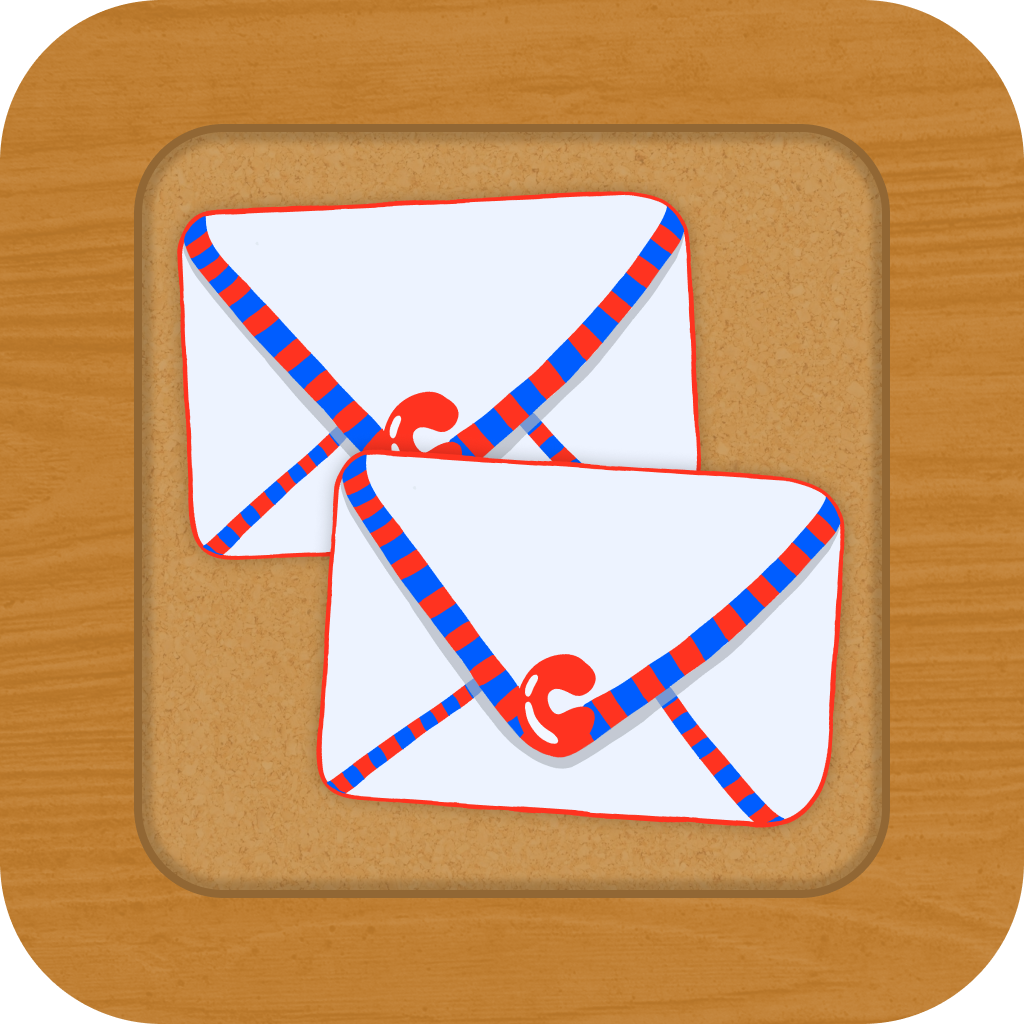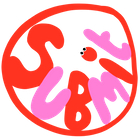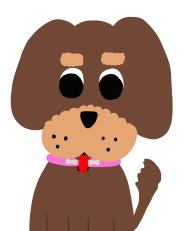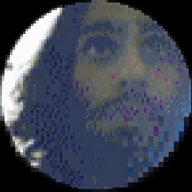Alex Woz is a Jewish artist whose artwork is an explosion of color, culture, and pride. Based in LA, his artwork draws on the multitudes of Jewish identity, incorporating images and themes that travel beyond the Ashkenormative restrains typically placed on Jewish culture.
I sat down with Woz to talk about inspiration, artwork, and, well, being Jewish.
Well, there’s no better place to start than at the very beginning. Where does your story begin?
My story begins with my grandparents, who are survivors of the Shoah and had to move to Argentina. They passed trauma down to my parents, who eventually had to flee Argentina to come to the States. As Jews, we understand that intergenerational trauma is really rampant in our communities. In fact, the word intergenerational trauma was a term coined to describe the Jewish experience. I think growing up dealing with that and hearing stories, especially from my dad and my grandpa, and then as I started to get older, experiencing anti-Semitism myself, led me down a path of wondering why other people cared more about my Jewish identity than I did.
I went to school as one of the only Jewish kids in a really predominantly white area. It was known that I was Jewish because I had a Bar Mitzvah and my parents look very Jewish. My parents would come to pick me up from school and the kids would throw rocks at their car and hurl abuse towards them. There were some situations where swastikas were drawn on my lockers and all of my books were taken from me and people drew swastikas on them. When we went to the school to do something, they just told my parents, ‘listen, you're not going to win this, just forget about it and move on.’ And that's exactly what we did.
Years, years later, I looked back on those experiences and reflected on them and realized that they weren't okay and that I couldn't have been the only kid that experienced that, even now. I've always been doing my art, my entire life. It's been my study, the love of my existence, and the purpose of my being for my whole life. It was only in May 2021 that I started to look at the community, which seemed in a lot of pain and ask myself, how can I help? So I just started creating art to switch the narrative and give Jewish people some good representation that I feel we deserve.
What is your first memory of art?
I love this question. When I was really young, like a baby, my parents would move around a lot because my dad had a job that required him to. So we lived all over South America, we lived in Mexico, and we lived in places in Europe, like Sweden, Italy, and France. When I was young, I started to form memories in some of those places. Then we went to Argentina for a while and then solidified moving to America, but growing up and switching environments all the time cemented something in my developing mind that there are different cultures everywhere. You know, these are the colors that I associated with this culture, here is how the art and architecture look with this culture. Even though I couldn't put language to that feeling or describe it well, I just knew that in Europe, you're gonna see fancy arches and stuff like that, but in South America, you're gonna see beautiful hills and people who are very devoted to the land and living a traditional cultural lifestyle with just explosions of color and warmth.
My first experience with art was also in video games. Probably up until the age of like, 18, I used to be a very intense video game collector. I grew up playing a lot of video games, so my first time noticing how cool art looked was looking at video games and being like, that was cool, or like, I really liked this Pokemon. I wish I had like a cooler answer to that, but it was probably video games.
I never really played video games, but I do understand what you’re saying. That makes a lot of sense to me, like that would be a good starting point towards acknowledging art with design and whatnot. Do you see those influences from video games come out in your work?
I don't think it comes out anymore, just because I went through such a rapid shift over the course of my life. I'm not classically trained like some artists are. It took me years to develop a style, but I guess when you get older and you develop as an artist, you reach pivotal moments where you either like unlock techniques, skills, abilities, new ways of looking at things and you're just like ‘oh, this I can add this to my tool belt’ and ‘this is part of what makes my art more stylistic or stand out in a certain way.’ Every artist has those aha moments. I wouldn't say those moments are connected to any other thing that I've experienced, like as a child or any foundational stuff I've experienced. It's more like always something that's changing as I've matured, gotten older and looked at more art and been like ‘whoa, that's really cool, I'm gonna steal a little piece of that and bring that into my work and try to execute that in my own way.’
So I think it would be cool [to draw video games], but I don't think it does. Otherwise, I would still be drawing Sonic just super realistic.
Have there been any key “aha!” moments or turning points in your artwork?
Something that artists understand really well that maybe non-artists have a difficult time with is understanding that all art is theft. Stealing is literally a gigantic part of coming to your own as an artist. There's that classic book ‘Steal like an Artist’ that really taught me that and helped me come to terms with borrowing techniques and stuff, even visual elements from other artists. It's true, from Picasso to David Bowie, every artist should know how to steal in a good way, not obviously plagiarizing.
I feel like these aha moments came from discovering other artists and just studying their work really closely. I've been really inspired by one of my favorite artists of all time named Tadanori Yokoo who is a Japanese graphic designer. His work is like such an explosion. It's so busy and there's a million things going on at once. It's collage, it's photographs, it's all of these things. These aha moments come from me looking at work like his and being like, ‘Oh, he's doing this border trick on the border of the river, and he's taking this photograph, collaging it and applying this gradient map over it.’ How can I, like I said, steal these techniques and use them in my own way? That's always where the aha moments have come.
Who inspires you, both professionally and personally, Jewish and goy?
Herbert Pagani, EM Lilien, Marc Chagall
I would honestly say at this point in my life as an artist, I'm really focusing and zeroing in on studying the lives of as many Jewish artists as I can. Because, like I said, after May of last year, I ended up asking myself a really important question. This is the central tenet of my work — am I a Jewish artist, or an artist who's Jewish, and there is a difference. I was like, ‘hell nah, I'm a Jewish artist’ point blank because there is a difference. I'm someone who can't remove my experiences as a Jew from the way I express myself.
Lately, I've been really zeroing in on the lives of other Jewish artists. For one, I would say one of my biggest inspirations is Herbert Pagani. He gave a really influential speech called a plea for my land, and he's an Italian Egyptian Jew. He was inspiring because he combined his art with his activism, and it made him unpopular and unliked. Because of that, people wanted him to stay in his place, not only as an artist but as a Jew, too. They didn't want to hear an artist speaking so eloquently and so fervently about Jewish politics and social issues, as he did at the time. He just was not afraid to raise his voice.
I couldn't go without mentioning Marc Chagall. Another one of my huge inspirations, his work was so ethereal and amazing. He was an activist in his own right, through his work and his medium.
Can you tell me a little bit about your artwork? What themes do you try to incorporate and where does your inspiration come from?
Every piece comes with its own case. Sometimes I'll marinate on a piece and I'll get an idea for it. It might take me months before I realize how I can execute it in the best way that I can. Typically, for a piece, one of the first steps in my process is to usually ask myself, what does the community need to hear right now?
In times where there's been this violence and anti-Semitism, I only see it growing as an issue, especially in this country. For the past maybe year and a half now, which doesn't seem that long in context, I realized that I've been making very reactionary art because of that. I've been waiting for something anti-Semitic to happen and creating art as a backlash to that. How can I tackle this?
It actually took me until a few months ago to realize that's not the right approach, to realize that Jewish identity is more than experiencing anti-Semitism. There's so much more to being Jewish than being hated for being one, and that took me a long time to figure out because I was never surrounded by Jewish people. All I experienced personally was anti-Semitism. So now, I guess my first instinct is not what the Jewish people want to hear, but what can I tell them that we need to hear? How do I keep it positive and not be reactionary?
You originated as a painter, so how did you stumble upon the world of collaging? Is there a medium you prefer?
I actually stumbled into graphic design from painting before I stumbled into collaging. I was in school, going to community college, trying to get my degree in fine art. I had a really amazing teacher that I would just hang out with after class, and she was the best. One day, after class, we're just talking and I tell her my goals, and she's like, ‘Alex, I'm gonna go Mom mode right now and give you advice that you need to hear but you're not gonna like. If you want to be stable in the future, don't get a degree in fine art. You don't need a degree to be successful as a fine artist. But while you're in school, you should pursue a degree in a safer realm within art that can guarantee you a job, and you could continue doing your fine art.’ At the time, I was like ‘oh no’ because I'd already gone so far, but I started to think about it more and decided I needed to do this. So I changed my major to graphic design.
I immediately fell in love with design and just dedicated hours every day to doing it. It's probably been seven years of creating multiple designs every day. There was a point when I first started where I was creating probably six or seven designs a day, and they were all garbage. None of them were good. But when you're learning a new skill, it's important to just learn through practice, not through theory. That's at least my approach. I just spent years just working super hard and finding out what worked and what didn't. Eventually, I just got a scanner. The scanner made all the difference.
When I first officially started doing Jewish collages was in 2021. I wanted to use pictures of Jews to spread these messages for my first Jewish pieces. I had a book, one of those books that's out of print everywhere — I looked for it in person, online, it's just not available. So if anyone knows where I can find “Portraits of Israel,” let me know because I cut it up and it got thrown away, unfortunately, but it was an old book from the 70s. I've had it in my family for a while, I have no idea where it came from, but it was on my bookshelf for quite a while. It was just a bunch of pictures of all the different Jewish ethnic groups that live in Israel, and it's like pictures of them going about their day-to-day life. So I was like, ‘huh, that's interesting,’ and so I just literally took scissors and I cut them out and scanned them in and just worked on it from there on Photoshop.
I’ve always admired how your work moves beyond the Ashkenormative narrative we have in the US. Do you see your art as a platform or mode for education on this topic?
Oh my gosh, of course, that is one of the primary motivations that I have when I create is to represent these other groups of Jewish diversity.
I would say that another point of contention in my work is understanding the power that propaganda has held over the heads of Jewish people just historically — propaganda in art has been such a powerful antagonist for the Jewish people. It's really damaged our community, both spiritually and physically. Part of my new assumed mission is to flip that onto its head, to use art, imagery and visuals as a way to heal the Jewish people instead of destroying us.
One thing that I always talk about is that there is no, just being real, at least in America, there is no shortage of Jewish representation. When Jews talk about representation, we're not saying that we need more representation, what we are saying is that we need the right representation. Jews have representation, but probably seven or eight times out of 10, it's an extremely, extremely poor representation. The thing is, sometimes even Jews are the ones that are representing us really poorly. And I don't think anyone's at fault. I don't think Larry David or, you know, Jerry Seinfeld are necessarily at fault for representing Jews as whiny Ashkenazis. But at the same time, I think it's really, really important for Jews today of any group to understand that when you're representing the Jewish people at this point, given the state of affairs with the Jews today, you need to be very conscious of how it's coming across.
Historically, Jews, like obviously, we're a very funny people. We've used comedy to cope with our pain for millennia, but at the same time, we have to make sure that although we can laugh within our own community we have to understand who on the outside is watching, what things are they going to say or feel that they've learned about us through watching from the outside in. Even when Jews take the initiative to write TV shows about another whiny Ashkenazi TV show, about your mother calling and saying you didn't eat all her soup — you're just reinforcing beaten-dead stereotypes that honestly do more to harm our community than help. What we could use more of is more representation of Jews, that is focusing on other diaspora experiences, including Sephardic Jews, Mizrahi Jews, Ethiopian Jews, South American Jews, and even East Asian Jews. There's so much there that we can pull from that we just have not been pulling from and I feel like a part of that is internalized anti-Semitism. That's also part of the reason why I do what I do, is because I feel like the Jews who represent ourselves poorly, truly actually believe those things about us. They push that to the outside world, and we're such a fragile minority that there's not enough of us to refute those beliefs. So within my work, I try really hard to represent all these groups. To say that we're more than this stereotype that even we have presented ourselves to be. Beyond that, there's also a narrative on the left of people saying that Jews are white Europeans, which absolutely is not the truth, either. So I think finding a balancing act between the two and just telling an honest story through photography is important. These are not drawings or paintings of fictional Jews, like these are photographs of real Jewish people living Jewish lives. And I think that's just important.
How long does each collage take to create?
Some take longer than others. I would say it's a lot faster than a traditional medium, like painting, but it still is pretty time consuming. The fastest one I've ever made was actually in an hour, and that was because I was super focused. But usually I’d say six hours.
Looking to the future, what do you have planned coming up?
I have a lot for 2023. My goals for last year were pretty simple — it was to start my clothing line and to travel, and I did both of those things. But for this year, it's narrowed down.
I’d like my practice as an artist to enter the realm of fine art more. I feel like I've gone through the wringer in the realm of graphic design, and I've come out the other end of that. Obviously, I'm always a student, and even in my heart I feel like I'm not that good. I still have so much to learn and so much to go with graphic design. But as someone who's been doing it multiple times every day for about seven years, you hit this point where you're like, ‘okay, I feel like I got this, I want to do something different.’
Actually returning back to the canvas has been my thing lately, asking myself, ‘how can I move beyond the digital realm to showcase my art?’ How can I go out in public and make statements that need to be made in public with my art that is going to mostly reach the people that it needs to reach? So one of my goals is to make larger works on canvas.
I have a really big secret project that I've been working on for over a year that I'm still working on, and I hope to release it this year. It's like a really special thing and it's been two years in the making already. I still have some more to go but I'm hoping to get it out this year. That's all I can say about that.

